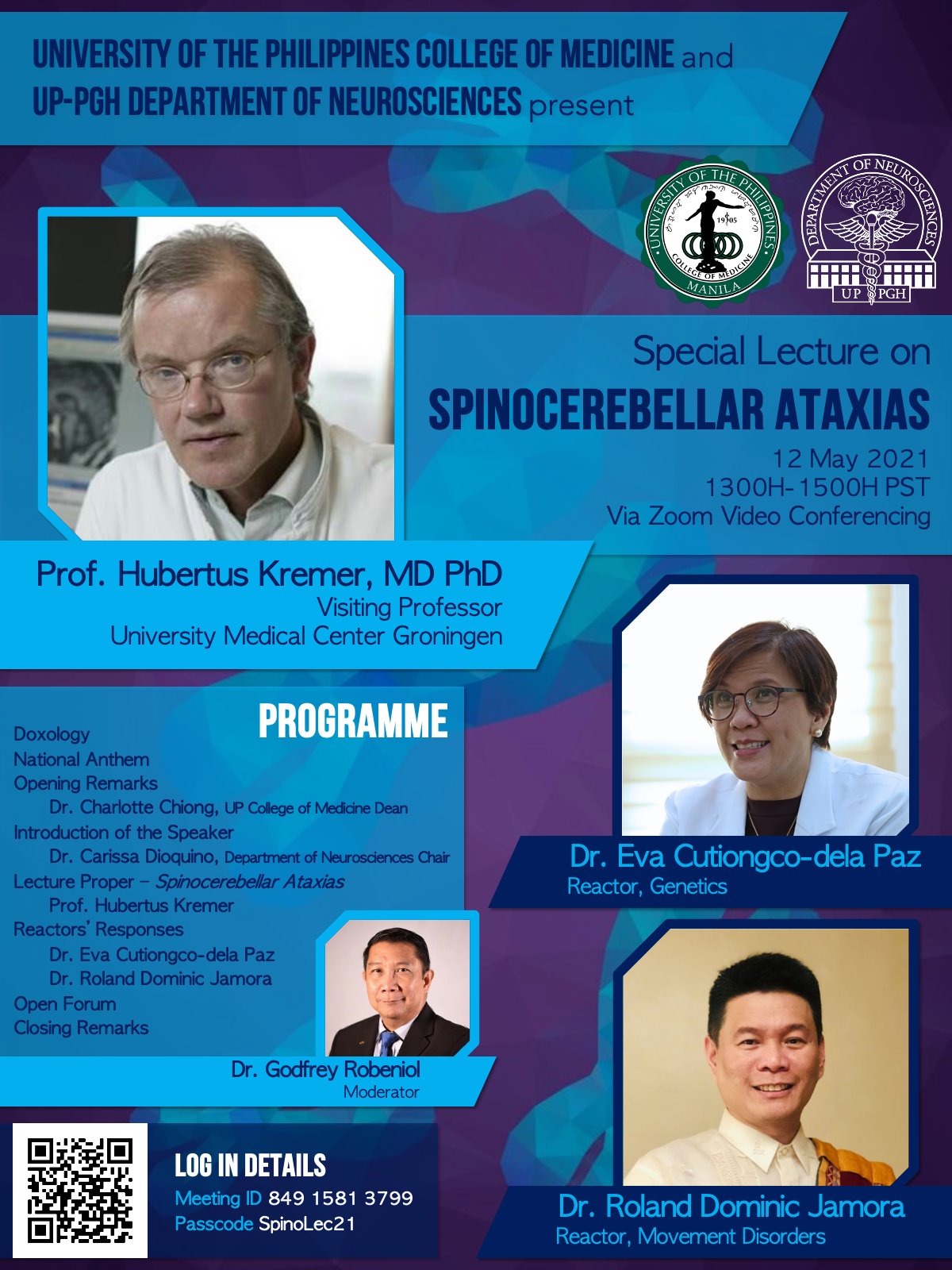Posted on June 09, 2021
The study of hereditary movement disorders has always been considered one of the most elegant yet complex branches of the neurosciences. Weaving through the intricacies of this neurologic subspecialty requires a sharp clinical eye, a comprehensive knowledge base, and a multidisciplinary viewpoint through which these diseases can be appreciated. In our current climate, the prevailing perspective in our approach to hereditary movement disorders remains heavily clinical. However, the paradigm shift from the clinical to the genetic has begun to change our way of thinking about these conditions - and, by extension, the very practice of neurology itself - and the opportunity to further our understanding of the field has always been one worth seizing.
One such opportunity arose during the first quarter of this year. On the 12th of March 2021, the University of the Philippines College of Medicine, in cooperation with the UP-PGH Department of Neurosciences, hosted a special lecture on spinocerebellar ataxias virtually via Zoom video conferencing. The lecture itself was delivered by Professor Hubertus Kremer, a visiting professor from the University Medical Center Groningen and one of the most highly esteemed experts in the field. Serving as moderator for the conference was Dr. Godfrey Robeniol, one of the adult neurology consultants of the UP-PGH Department of Neurosciences.
During his brief yet comprehensive talk, Professor Kremer painstakingly described the spectrum of spinocerebellar ataxias based on phenotype, mode of inheritance, age of onset, and most importantly, genotype, among others. He emphasized the need to focus on the genetics of these diseases and stressed that a certain genotype does not necessarily produce one single phenotype, with epigenetic factors also playing a significant role in gene expression in these conditions and phenotypes overlapping across genotypes. Although spinocerebellar ataxias are relatively uncommon at a prevalence of 3 per 100000, the impact of these diseases on the quality of life of patients is marked, and their prognosis is hinged upon the genetic basis of these conditions as determined by molecular markers. Thus, early recognition of these conditions coupled with targeted molecular treatment and symptomatic management can help improve the lives of many of these patients. In his closing statements, Professor Kremer expressed hope that the lecture was able to provide us with a better insight into the alternative genetic approach to spinocerebellar ataxias.
Two prominent figures in the field of Philippine medicine also gave their reactions to Professor Kremer’s talk after its culmination. Dr. Eva Cutiongco-dela Paz, a geneticist and the director of the National Institutes of Health, reiterated the need to focus on the genetics of these conditions and emphasized the demand for more rigorous data gathering through the formation of a registry for the benefit of these patients. These insights were echoed by Dr. Roland Dominic Jamora, a movement disorders specialist and consultant of the UP-PGH Department of Neurosciences, who also shared his experiences in managing patients with SCA in his practice. A huge bulk of the discussion during the open forum featured many questions on symptoms, genetics, diagnostics, therapy, and prognostication of patients with spinocerebellar ataxia.
Professor Kremer’s lecture on spinocerebellar ataxias may have generated more questions that have yet to be answered, but it has certainly served its purpose – to pique our interest in and enhance our own understanding of the genetics of spinocerebellar ataxias. And using the knowledge gained from this experience, we can strive to provide better and more nuanced care for our ultimate beneficiaries: our patients.
